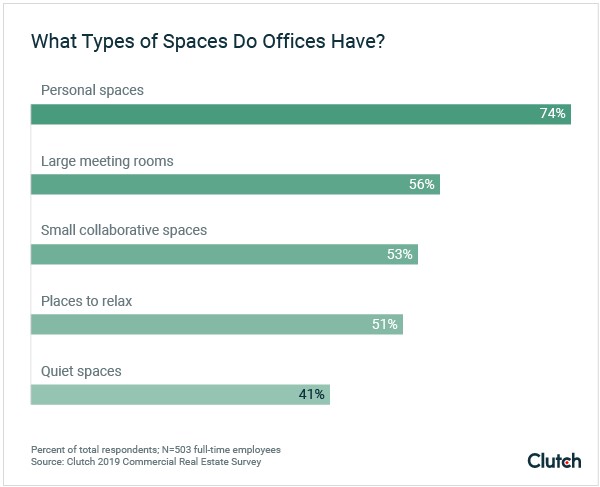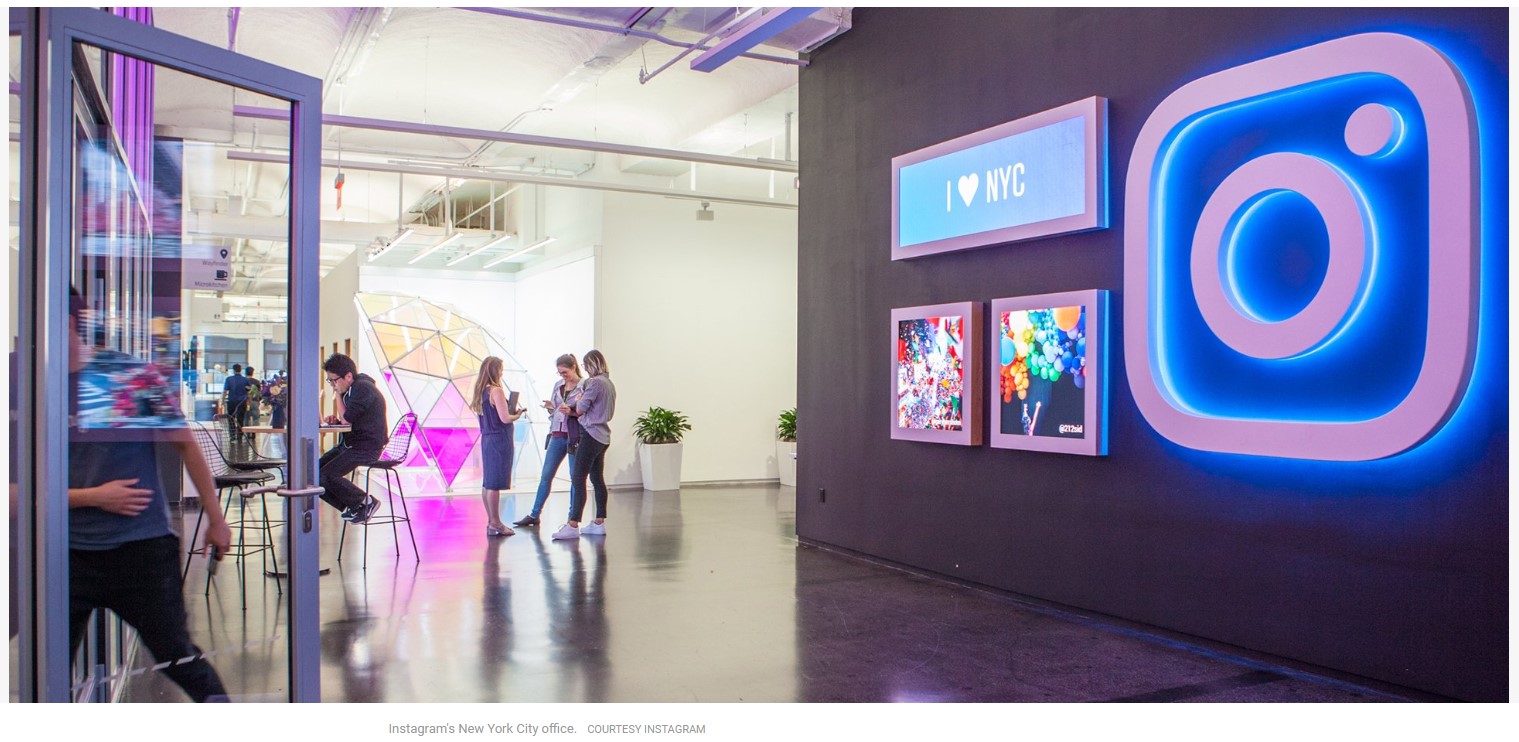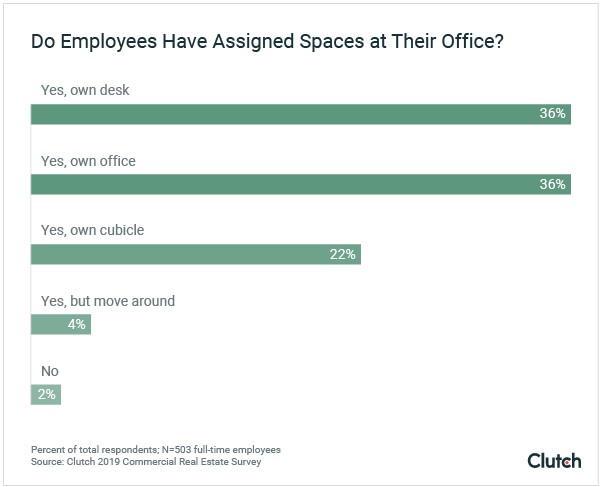Although remote working is becoming commonplace across the globe, employees still value working in an office. In fact, 83% of employees want at least some in-office time, according to a recent study by Clutch.
As more people work remotely, businesses must learn to create spaces where people enjoy working that also provide a sense of purpose and connection to the company.
How can businesses create office spaces that appeal to full-time, flex-time, and remote employees? Read on for a few ideas.
Remote Workers Value Quiet Spaces and Community Spaces
Understanding how to create spaces for remote workers means getting to know their work habits. For example, people who work from home are often not conditioned to distractions because they’re able to control their environments. Many remote workers appreciate the ability to “get in the zone” and exercise their creativity while working in a quiet, uninterrupted space for long periods. Providing quiet spaces helps remote workers accomplish more and feel better about spending time in the office.
| Join BambooHR, Workable, and HireVue as they explore how to best build and manage a remote workforce. Learn tips for effectively onboarding a remote employee and more! Click here to register for this *FREE* Webinar on Thursday, November 21, 2019. |
Remote working can also result in a sense of isolation or disconnection from the rest of the team. Creating social and community spaces is a great advantage for companies that want their remote workers to join them for an occasional day in the office. Providing spaces where remote workers can engage with management and coworkers while also having access to quiet work spaces is essential to making them feel welcome and productive.
Full-Time and Flex Workers Need Spaces That Encourage Productivity and Engagement
Fortunately, the types of spaces that appeal to remote workers also improve the productivity and engagement of full-time and flex workers. Making your office healthy, fun, and productive benefits all employees and helps your company get the most from all its workers.
In an age when employees often plug in 24/7 and businesses compete fiercely for top talent, companies need to provide employees with a mix of work spaces to meet their personal and professional needs.
In 2019, most offices have a variety of spaces, according to the Clutch survey, such as:
- Personal spaces
- Large meeting rooms
- Collaborative spaces
- Places to relax
- Quiet zones
Fostering a sense of fun and community is another crucial aspect of today’s work culture. The ability to take a break and enjoy a game, have a meal, or take part in conversation provides a much-needed break from the intensity and isolation that can result from hours of staring at a computer screen.
Social spaces also foster connections that can result in a higher level of engagement with the company. For example, Instagram takes a cheery, whimsical approach to its office design, with a strong emphasis on aesthetics.
Github caters to a variety of office personalities and roles, providing a selection of spaces where highly focused workers and introverts can recharge and concentrate. For example, a library-style work space provides a quiet atmosphere with tables and pods where employees can work in silence.
When you’re planning office spaces and aesthetics, don’t forget to infuse your company’s branding and culture into the design. Your business consulting firm will help you create an aesthetically pleasing office space that also matches your company culture. Showcasing your product images, mission statements, company history, or branding reminds employees why they come to work and provides a sense of purpose.
All Workers Benefit from a Sense of Belonging
Making workers feel welcome and providing a sense of belonging are essential for businesses that hope to retain employees. Creating a sense of belonging begins by providing a personal work space for all the members of your team.
Full-time employees are accustomed to having their own space, and 98% of them have an assigned space. Most employees have their own office (36%) or their own desk (36%), while some have cubicles and others move around.
Although it’s not always possible to assign offices or desks to remote workers, companies can still set aside space for them to work. Knowing there’s an area to work in, even if it’s different each time, encourages remote workers to spend more time in the office.
Cater to a Variety of Workers with an Array of Office Spaces
Creating an office layout that includes a variety of spaces helps companies cater to different personalities, styles, and tasks. Quiet spaces, meeting spaces, and social spaces are common elements of modern-day office designs that cater to full-time, flex-time, and remote employees.
Kristen Herhold is a Senior Content Developer for The Manifest, a data-driven, business-to-business research platform in Washington, D.C.





